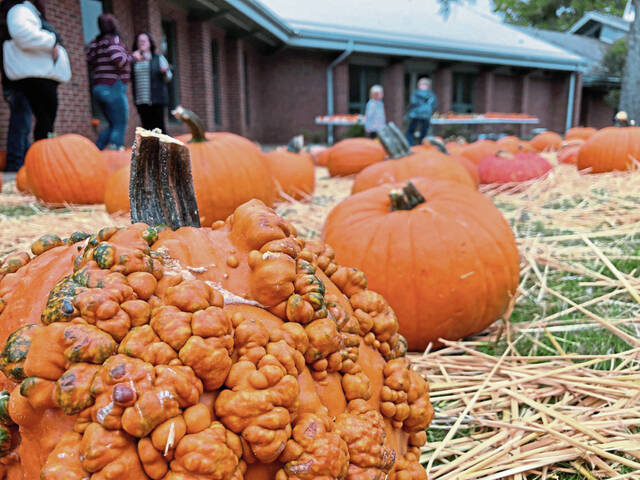
The carved and uncarved pumpkins that will be in businesses and homes over Halloween can be put to good use once trick-or-treat is over.
Just like glass, plastic, tin, aluminum, paper and cardboard, the old pumpkins can be recycled and put to good use for the environment, the state Department of Conservation and Natural Resources said.
The pumpkins and all of those countless seeds inside, can be nutritious snacks for birds and backyard animals, the state says.
The conservation department says pumpkin owners can follow these tips for recycling the orange gourds so they are safe for wildlife, as well as the environment.
• Compost pumpkins: Pumpkins that have been carved may already be decomposing around Halloween. Pumpkins, with the amount of water they contain, are food for a compost pile. If you want to prevent unwanted pumpkin plants, remove the seeds before composting.
• Share pumpkin seeds with wildlife: Collect seeds from the pumpkins before composting and let the seeds dry. Without adding salt or seasoning, scatter the seeds outside or put them in a platform feeder as a special treat.
• Don’t create a pumpkin pile: Don’t leave pumpkins in state parks, forests or elsewhere before obtaining permission.
• Pumpkin pieces for wildlife: The cut pieces of pumpkin can be scattered outside as a treat for local wildlife. Birds will feed on the flesh of the pumpkins in addition to the seeds, as will squirrels, foxes, and deer.
• Not all pumpkins safe for wildlife: Pumpkins or gourds that have been bleached, painted, or have fake foliage or plastic decorations, can be toxic and harmful to wildlife.
• Make a “Snack-o-lantern:” Reuse a pumpkin by converting it to pumpkin feeder! Cut the pumpkin in half and fill with birdseed. Use sticks, dowels and rope to hang them from trees and create a custom feeder. Fresh, firm pumpkins are best for this use.
Joe Napsha is a Tribune-Review staff writer. You can contact Joe by email at [email protected] or via Twitter .
